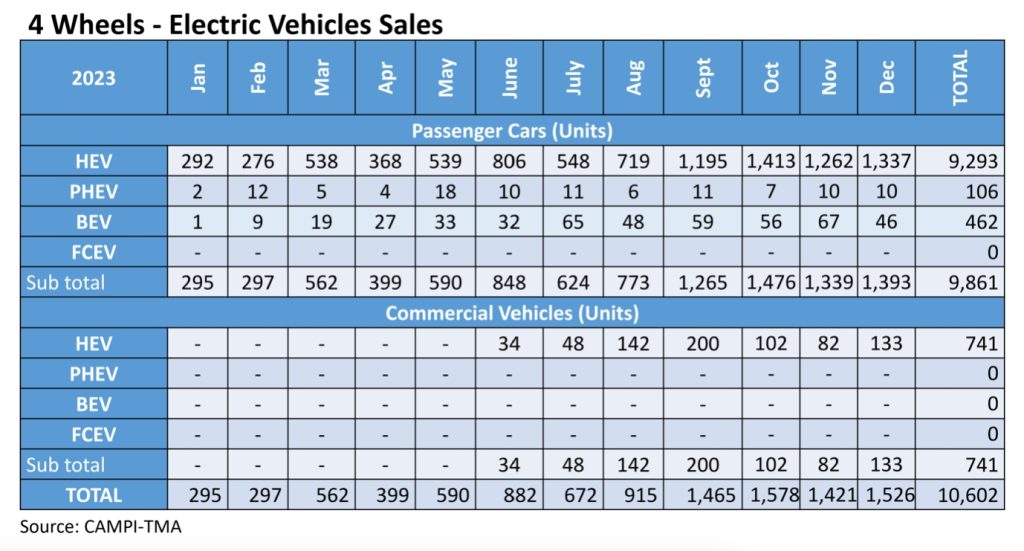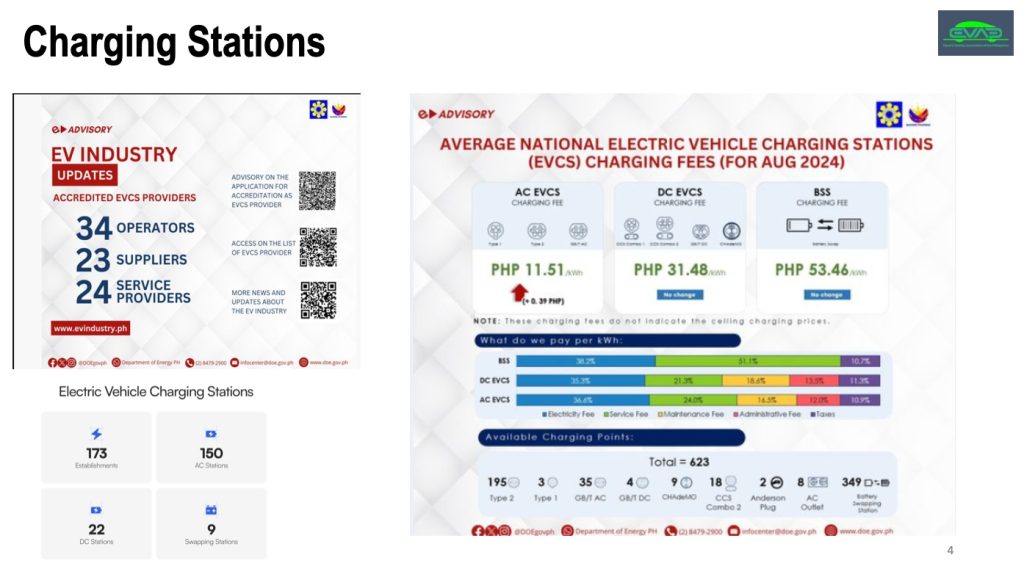Your eyes are not deceiving you, the number of electrified cars on the road are increasing. The Electric Vehicle Association of the Philippines shared numbers that confirm this. They recently held a press conference that let us see the bigger picture of electrification in the country.
Let’s start with the pandemic year – 2020. Despite the restrictions in place, the Land Transportation Office (LTO) reported 7,364 new registrations of EVs. This isn’t all passenger cars though as LTO’s report includes electric motorcycles and commercial vehicles like trucks. The latest data that EVAP had from the LTO lists 8,856 new EV registrations for 2022 which is a 20.26% increase.
For 2023, EVAP shared CAMPI’s report. There, it listed 10,602 new electrified cars for the year.
It showed hybrids as the best-selling electrified cars at 10,034, Plug-In Hybrids (PHEVs) at 106 and Battery Electric Vehicles (BEVs) at 462. It looks like Filipinos would go big or go hybrid when it comes to electrified cars.
Charging is where things get murky. The presentation credited to the Department of Energy says there are 173 establishments with EV charging stations, 150 AC stations, 22 DC or Fast Charging stations, and 9 battery swapping stations. But in the same slide, they said there are 623 charging points nationwide that includes different protocols like Type 2, Type 1, GB/T AC, GB/T DC, CCS2 Combo 2 and a staggering 349 battery swapping stations.

The DOE isn’t losing sight of the real goal though. Remember the move to green mobility is a global effort to reduce the harm to the environment. The short term goal is firstly having more charging stations. They are working on a mandate that will require ‘big’ establishments and fuel stations nationwide to have at least 1 charging point. The latter is already in the works as Unioil, Shell, and Seaoil are slowly putting up more charging slots in their branches.
On the horizon is making sure the source of energy of these charging stations are green as well. That means getting electricity from green energy providers and solar power. They’re also working on making this a requirement for private companies that will put up a charging station.
The DOE and EVAP are also allaying concerns about the safety of EVs. DOE said they were already working with the Bureau of Fire Protection since 2016 for the emergency response protocol of EV fires. They are in the process of scaling it up as more EVs now ply the road. Nissan is also helping in the EV fire safety education by having their dealers conduct EV safety and management training with volunteer fire brigades.

Another precaution the two organizations are taking is working on the restriction of DC Fast Charging in enclosed spaces. Despite modern EVs having temperature control and trickle charging features, fast charging still introduces heat to the car’s batteries and therefore a hazard in closed spaces. The DOE is updating their guidelines so that DC Fast Charger suppliers have to demonstrate that they can handle emergency situations in their facility and not have to wait for the fire brigade.
They are also against the use of adapters in EV chargers. The standard protocol for the Philippines is the CCS2 Combo 2 as indicated in the DOE’s guidelines released last year for EV charging suppliers. According to them, the use of adapters bypasses the safety features of EVs and so introduces hazards to the car. However, this wasn’t included in their guidelines and so the use of adapters still lies at the discretion of the providers.
Lastly, the upcoming EV summit isn’t just to showcase the latest electric vehicles in the country. They will be conducting safety conferences throughout the 3 days of the event so that anyone interested in an EV can also be educated on how to deal with them safely. They even invited a South Korean resource speaker for the fire safety concern of EVs.
The subject of mobility isn’t just for private cars. It concerns the bigger public transport sector as well. The Public Transport Modernization Program (or PTMP, formerly Public Utility Vehicle Modernization Program or PUVMP) is still an unpopular move by the government that seeks to make public transport cleaner and safer. Despite the setbacks, they are making good strides in introducing EVs into the sector.
So far, they have 28 EV routes nationwide that are being monitored by the Land Transportation Franchising and Regulatory Board or LTFRB. The specific routes weren’t shared with us but they said those are being serviced by 443 electric vehicle PUVs. Take note that these routes are new and EV exclusive. This can only improve once the DOE finishes on the updated Comprehensive Roadmap for the Electric Vehicle Industry or CREVI.
To sum it all up, the transition to EVs by the private sector seems to be going well despite the slow realization of the charging stations. The public sector is just as slow given the backlash they’re facing for the PTMP. Still, the DOE and EVAP are making a slow and steady progress towards greener mobility in the country.
See all of them and learn more about EVs in the upcoming Philippine Electric Vehicle Summit on October 24-26 at the SMX Convention Center.

